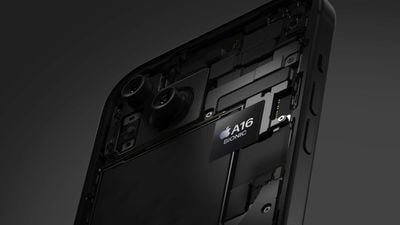The Steve Jobs Archive today shared never-before-seen footage of 28-year-old Steve Jobs speaking at the 1983 International Design Conference in Aspen, Colorado. His speech was focused on the future of computers and how they would change daily life.

The Steve Jobs Archive was launched in 2022 by Laurene Powell Jobs, Tim Cook, and Jony Ive. The website features a collection of quotes, photos, videos, and emails from Jobs, and offers fellowships to young creators looking to follow in his footsteps.
The new page features an introduction from Ive, who led design at Apple for over two decades and was a close friend of Jobs:
Steve rarely attended design conferences. This was 1983, before the launch of the Mac, and still relatively early days of Apple. I find it breathtaking how profound his understanding was of the dramatic changes that were about to happen as the computer became broadly accessible. Of course, beyond just being prophetic, he was fundamental in defining products that would change our culture and our lives forever.
On the eve of launching the first truly personal computer, Steve is not solely preoccupied with the founding technology and functionality of the product’s design. This is extraordinarily unusual, as in the early stages of dramatic innovation, it is normally the primary technology that benefits from all of the attention and focus.
Steve points out that the design effort in the U.S. at the time had been focused on the automobile, with little consideration or effort given to consumer electronics. While it is not unusual to hear leaders talk about the national responsibility to manufacture, I thought it was interesting that he talked about a nation’s responsibility to design.
In the talk, Steve predicts that by 1986 sales of the PC would exceed sales of cars, and that in the following ten years, people would be spending more time with a PC than in a car. These were absurd claims for the early 1980s. Describing what he sees as the inevitability that this would be a pervasive new category, he asks the designers in the audience for help. He asks that they start to think about the design of these products, because designed well or designed poorly, they still would be made.
Steve remains one of the best educators I’ve ever met in my life. He had that ability to explain incredibly abstract, complex technologies in terms that were accessible, tangible and relevant. You hear him describe the computer as doing nothing more than completing fairly mundane tasks, but doing so very quickly. He gives the example of running out to grab a bunch of flowers and returning by the time you could snap your fingers – speed rendering the task magical.
When I look back on our work, what I remember most fondly are not the products but the process. Part of Steve’s brilliance was how he learned to support the creative process, encouraging and developing ideas even in large groups of people. He treated the process of creating with a rare and wonderful reverence.
The revolution Steve described over 40 years ago did of course happen, partly because of his profound commitment to a kind of civic responsibility. He cared, way beyond any sort of functional imperative. His was a victory for beauty, for purity and, as he would say, for giving a damn. He truly believed that by making something useful, empowering and beautiful, we express our love for humanity.
Head to "The Objects of Our Life" page to learn more about the speech that Jobs gave, and to view some related photos and exhibits from that time.
The full video of Jobs speaking can be found towards the bottom of the page.



 Note: MacRumors is an affiliate partner with Amazon. When you click a link and make a purchase, we may receive a small payment, which helps us keep the site running.
Note: MacRumors is an affiliate partner with Amazon. When you click a link and make a purchase, we may receive a small payment, which helps us keep the site running.



 Note: MacRumors is an affiliate partner with Amazon. When you click a link and make a purchase, we may receive a small payment, which helps us keep the site running.
Note: MacRumors is an affiliate partner with Amazon. When you click a link and make a purchase, we may receive a small payment, which helps us keep the site running.




 Note: MacRumors is an affiliate partner with Amazon. When you click a link and make a purchase, we may receive a small payment, which helps us keep the site running.
Note: MacRumors is an affiliate partner with Amazon. When you click a link and make a purchase, we may receive a small payment, which helps us keep the site running.





 Note: MacRumors is an affiliate partner with Best Buy and Amazon. When you click a link and make a purchase, we may receive a small payment, which helps us keep the site running.
Note: MacRumors is an affiliate partner with Best Buy and Amazon. When you click a link and make a purchase, we may receive a small payment, which helps us keep the site running.





 Note: MacRumors is an affiliate partner with Amazon. When you click a link and make a purchase, we may receive a small payment, which helps us keep the site running.
Note: MacRumors is an affiliate partner with Amazon. When you click a link and make a purchase, we may receive a small payment, which helps us keep the site running.


















